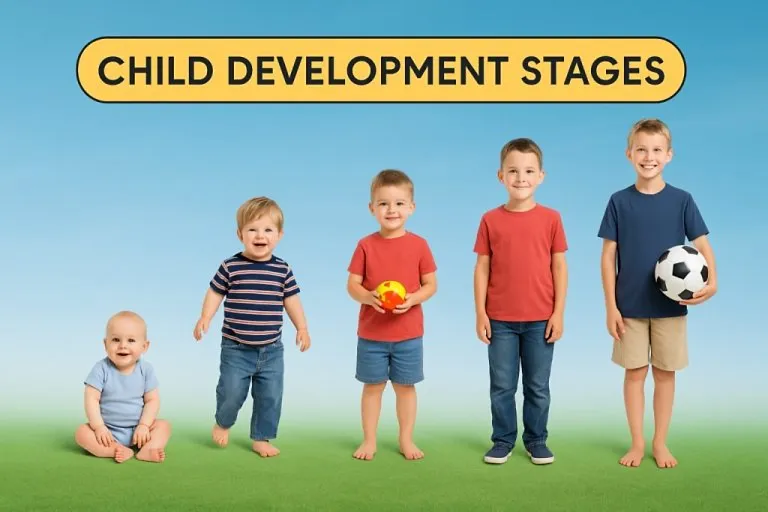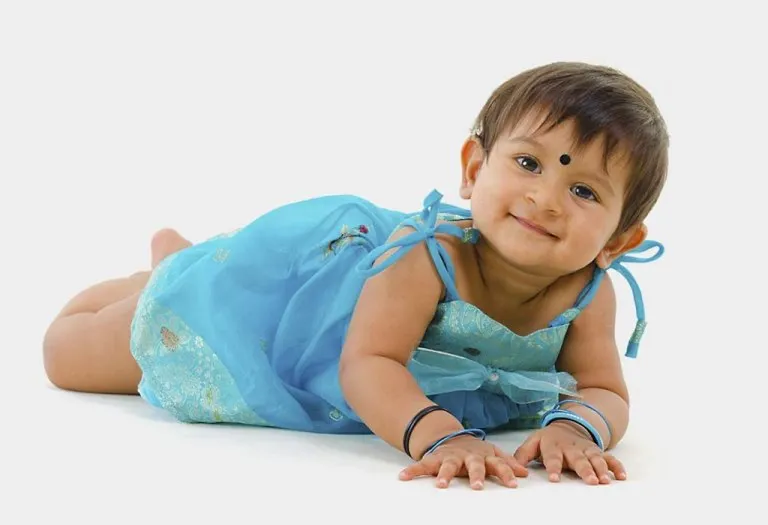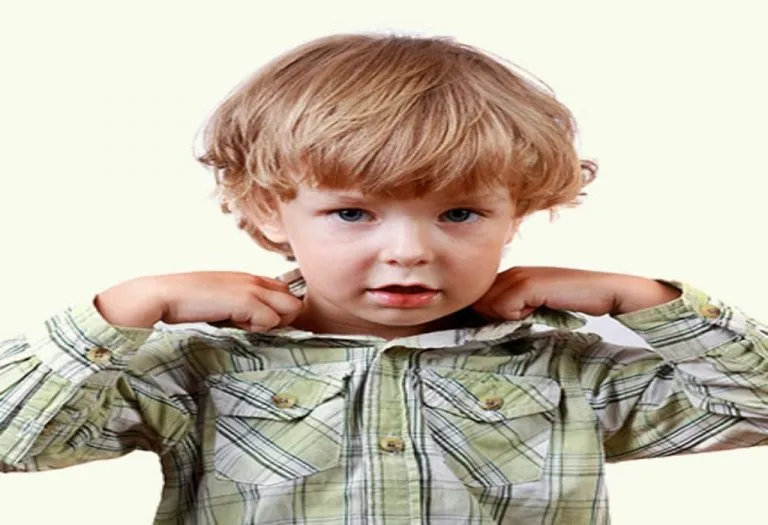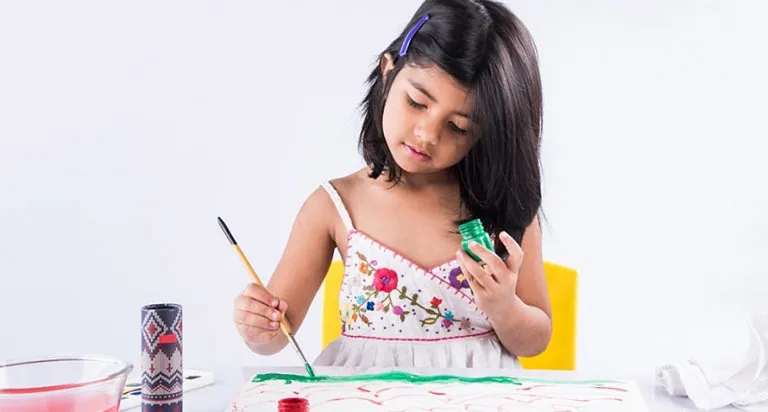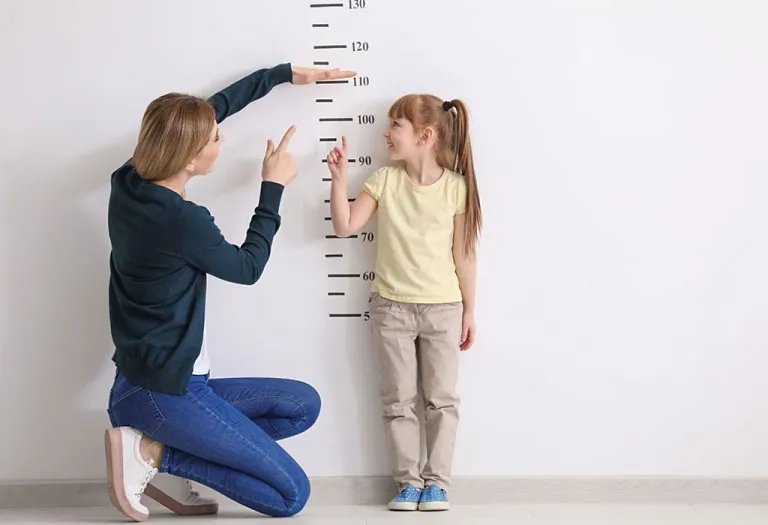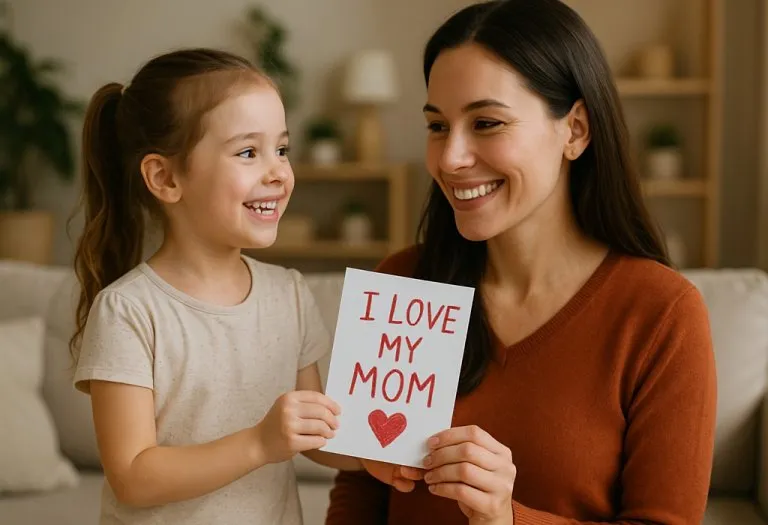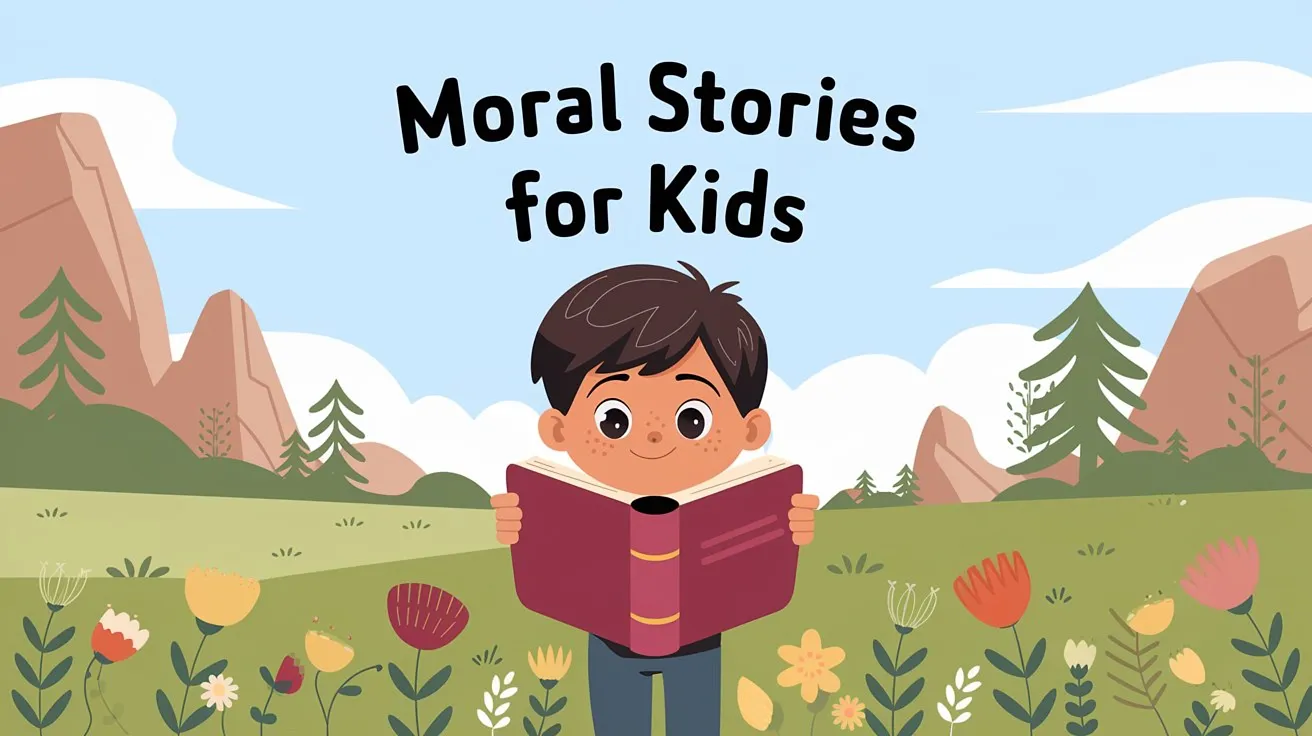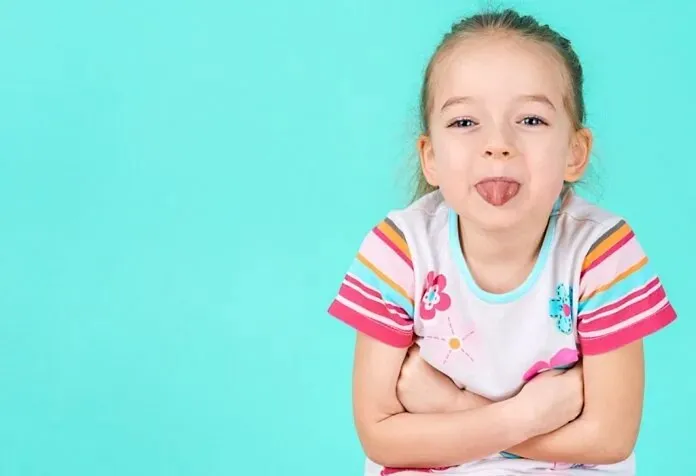Child Development Stages by Age With Milestones
- What Are the Stages of Childhood Development?
- 4 Key Domains of Child Development
- What Happens If Your Child Doesn’t Meet Development Milestones?
- FAQs
All parents want their child to grow up to become a smart, successful, and happy individual. They have big dreams for their little one the moment they take their first steps! However, children must go through numerous developmental stages, each with its own significance and set of benefits. As parents, learning about the valuable milestones a child navigates during their childhood helps a great deal in ensuring the child is on the right path, hits all the milestones, and continues to develop steadily. Since every child is unique, children’s development stages and growth will be unique from those of every other child, and so will be their strengths and weaknesses. Thus, every development of the childhood stage will bring excitement and learning.
When children are in their growth phase, they undergo several distinct developmental stages. These phases can be easily segregated based on the age range they are in. These phases of growth have been documented as being helpful to parents in understanding their growing child better and also handling them accordingly. Based on this, parents can follow a few tips and tricks that will enable them to focus on their child’s overall holistic growth.
Children undergo numerous physical and mental changes as they develop, and the exact nature of these changes is largely determined by genetics. By understanding the various developmental stages a child goes through, you, as a parent, can provide them with the necessary support to develop in a positive manner. By taking note of these different stages and keeping an eye out for any sort of developmental habits, you will be able to understand your child better!
What Are the Stages of Childhood Development?
There are different stages of childhood development that have been segregated based on the age of the children and their progress. Each of these stages of child development has distinct periods, which require different parenting approaches. Once you’ve read through them, you’ll be able to acknowledge certain behavioural, physical and emotional traits in early childhood development stages.
The childhood development stages are broadly classified as:
- Birth (0 to 1 month)
- Baby Development (1 to 12 months)
- Toddler Development (1 to 3 years)
- Preschooler Development (3 to 5 years)
- School-Aged Children Development (6 to 17 years)
1. Birth
When the baby is around 1 month old, they are considered to be in the birth stage of their development cycle. Here, the baby is generally trying to make sense of the world around him, and he is very attached to the mother, as she provides him food, warmth and shelter, and takes care of his other needs.

If you’re a parent who has an infant in this stage of development, you’ll be able to notice certain signs, such as the baby holding his head erect and steady when you hold them upright.
Parenting Tips:
- During this stage, your baby will start recognising faces around them. He may begin to coo and babble by 2 to 4 months of age, so take note of the different sounds he makes at this age of development.
- He will slowly learn to develop his motor skills by lifting his head while being on his tummy. It is important that you can give your baby at least 20 to 30 seconds of tummy time sessions right from their 2nd week, and gradually increase the time as they grow older.
- He will also begin displaying certain reflexes, such as opening his mouth, moving his head when you stroke his cheeks, and trying to grasp things you put in his hands.
2. Baby Development (1-12 Months)
Between the ages of one and 12 months, it is the “baby development stage” of childhood. During this time, your baby will begin to exhibit characteristics that are characteristic of this particular stage.

Babies during this age are able to easily identify their parents and other close relatives and will feel at ease with them. They will also be more comfortable expressing themselves with time. From one to 12 months, babies go through an expanse of development, starting from smiling back if you smile or talk to them and making “cooing” noises like “ooo” and “ahh to sitting up by themselves and walking with the help of furniture, waving ‘bye,’ and saying ‘mama’ or ‘papa.’ (1)
Parenting Tips:
- Your baby will now begin to understand their body a little better. He will start improving his motor skills, so you can provide him with toys that will help enhance stimuli like sound, touch, and sight.
- He will also be able to sit up when you prop him up, but he may struggle to maintain his balance. Ensure you’re able to strengthen his core muscles to help him with that.
- Your baby will also find a love of putting things in his mouth, as he will begin teething at this stage of life. Ensure that you do not provide any harmful objects that he could insert into his mouth.
- By the time he is in his 7-12-month stage, he will understand names and other commonly used words. Try seeing if he responds to certain words at this age. Don’t wait for a particular age; talk to your baby right from the moment they are conceived. Your voice will calm them down when they are shocked or overwhelmed (2).
- Kids love being in motion towards the end of this stage, and will almost be able to sit up on their own. Your little one will also start trying to walk and build strength in his legs, so try helping him out.
3. Toddler Development (1-3 Years)
Children between 1 and 3 years of age are in the toddler stage of development. During this stage, children begin to show parts of their personality. It is essential to keep an eye out, as they love to explore the independence that comes with the freedom of walking around.

Parenting Tips:
- At this age, kids will begin to understand concepts like a bedtime routine, which gives them a sense of comfort. Make sure you stick to a disciplined bedtime routine for your child at this age. You can include reading in your toddler’s bedtime routine.
- As your child should be able to walk fairly independently at this age, you must keep an eye out for them wandering or coming into contact with hazardous items.
- Your little one might be clumsy, but he should have decent motor skills now. Provide him with bulky stationery like fat crayons or building blocks to aid their cognitive and motor development at this stage.
- Take some time out and talk to your child to develop their language speaking skills (3). He can begin to form short sentences that may be a bit incoherent, but with practice, he will improve.
4. Preschooler Development (3-5 Years)
This is the age between 3 and 5 years old, where your child is no longer a baby! He is now able to do things, such as run and have conversations. Now, parents need to help their child grow from a mental perspective and ensure that he is developing in kindergarten. You can talk to your child’s teachers and gauge the kind of activities that he enjoys at school.

Parenting Tips:
- At this age, kids love talking about anything and everything. Continue talking to your child and engage in his little conversations. Since they can speak clearly, which anyone can understand, it is good to engage in conversations with them (4).
- At this age, your child can read and understand what they read. Have a few books ready to help them improve their reading skills, creativity, and even pronunciation.
- Let your child also run around and get much-needed exercise, as he is at an age where he has oodles of energy!
5. School-Aged Children Development (6-17 Years)
School-aged children fall within the 6 to 17-year age bracket. At this age, they are taking in the world around them and are getting influenced by what they see and hear. However, if nurtured in the right way, kids will begin to show traits of intelligence, thoughtfulness, and emotional intelligence, which is exactly what we, as parents, want for them.

Parenting Tips:
- Kids at this age have fully developed motor skills and plenty of energy. You need to find ways to channel that energy! See if your child is interested in sports, and ensure that they get exercise on a daily basis. They will enjoy plenty of activities, such as riding a bike, engaging in physical sports, jumping rope, painting, drawing, and more (5).
- Your child will also begin to form peer relationships at this age, so make sure that you’re involved in their social development. If you notice that your child is finding it difficult to communicate with new people, be there to support him. Kids should receive emotional and mental support at this stage, as it helps them when they grow up!
- Your child will also begin developing secondary sexual characteristics during the later part of this stage, so keep an eye out for the same.
- Some kids can also begin showing traits of independence at this age. As long as your child is able to take care of himself, you can begin loosening the reins a little and allow him to make his own decisions.
4 Key Domains of Child Development
Children develop through four main areas, and each one is connected to the others. Progress in one area often supports growth in another. Every child moves at their own pace, so no two journeys look exactly the same.
1. Communication
From early sounds to full conversations, children gradually learn how to express themselves and connect with family, friends, and teachers. Strong communication skills form the base for building relationships as they grow.
2. Physical Development
Physical growth encompasses both large movements (such as walking, jumping, or climbing) and finer skills (like holding a spoon or drawing). As children progress through different stages, they develop balance, coordination, and confidence in their body movements.
3. Social and Emotional Development
This area helps children understand their emotions, develop self-awareness, and learn how to interact with others. Developing these skills supports positive relationships and helps them manage emotions in different situations.
4. Cognitive Development
Cognitive growth is about how children think, explore, and make sense of the world. Early milestones include curiosity, problem-solving, and understanding basic concepts such as numbers, patterns, and cause and effect. These first years shape how a child approaches learning later on.
What Happens If Your Child Doesn’t Meet Development Milestones?
Every child grows differently, and it’s natural for some to reach milestones earlier or later than others. If progress seems delayed, it may or may not point to an underlying issue such as a special educational need. Delays can have many causes, so if you’re concerned, it’s best to check with a doctor or paediatrician. Early support, such as speech, physical, or occupational therapy, can make a big difference.
There are several experts, such as occupational therapists, paediatric neurologists, speech/language therapists, and psychologists, who can help in the development of your child. You can ask your paediatrician for a referral to these specialists.
It’s essential not to delay if you suspect any disorder or developmental delay in your child and to address it with the help of a specialist effectively.
FAQs
1. What to do if your child struggles with some activities for their age?
It’s normal to worry if your child finds certain milestones challenging. Remember, these milestones are only general guides, and every child develops at their own pace. Some children may excel in one area and require a little more time in another. If you’re concerned, your child’s paediatrician is the best person to ask. They can check your child’s progress, suggest helpful therapies like physical, occupational, or speech therapy, or connect you with specialists and resources if needed (6).
2. What are the signs of developmental delays in young children, especially toddlers?
Developmental delay refers to when a child is slow to reach one or more developmental milestones expected of them, given their age. Developmental delay could occur in speech, vision, hearing, or motor function. Children born prematurely often have milestone delays of one month or so, which is normal. However, if a full-term child shows symptoms such as delays in rolling over, sitting up, crawling, and walking, has difficulty with fine motor skills, problem-solving, talking (or talking late), or remembering things, you should consult a paediatrician (7).
3. What constitutes early childhood development?
Early childhood spans roughly from 1 to 6 years of age and is the primary stage for rapid physical growth, language sponging, social development via play and peer interaction, and cognitive development.
4. What are some common challenges children face in their middle childhood?
Middle childhood, generally considered to span from ages 6 to 12, presents challenges such as the establishment of more complex social connections, increasing academic expectations, the development of self-identity, and the exploration of personal interests and hobbies.
The early development stages of a child are a challenging time, and parents must be prepared to be on their toes at all times. Everything that a child sees, hears, touches and even smells can influence their behaviour, and it is the parents’ duty to provide a nurturing environment in which the child can develop. However, you must keep an eye on your child both at home and outside, as kids tend to experiment a lot. Don’t leave anything to chance! At the same time, don’t forget to enjoy your little one’s behaviour and antics. When they are small, they are truly themselves without any restrictions, so try to ensure that they have a childhood worth remembering.
Also Read:
Physical Development in Kids
Types of Play For Child Development
Factors Affecting Child Growth and Development
The Importance of Children’s Play and Its Role in Development
Was This Article Helpful?
Parenting is a huge responsibility, for you as a caregiver, but also for us as a parenting content platform. We understand that and take our responsibility of creating credible content seriously. FirstCry Parenting articles are written and published only after extensive research using factually sound references to deliver quality content that is accurate, validated by experts, and completely reliable. To understand how we go about creating content that is credible, read our editorial policy here.
1. Cleveland Clinic – Baby Developmental Milestones (Infant Milestones)
2. CDC – Positive Parenting Tips: Infants (0–1 years)
3. CDC – Positive Parenting Tips: Toddlers (2–3 years old)
4. ASHA – Your Child’s Communication: First Grade
5. Stanford Medicine – The Growing Child: School-Age (6 to 12 Years)






